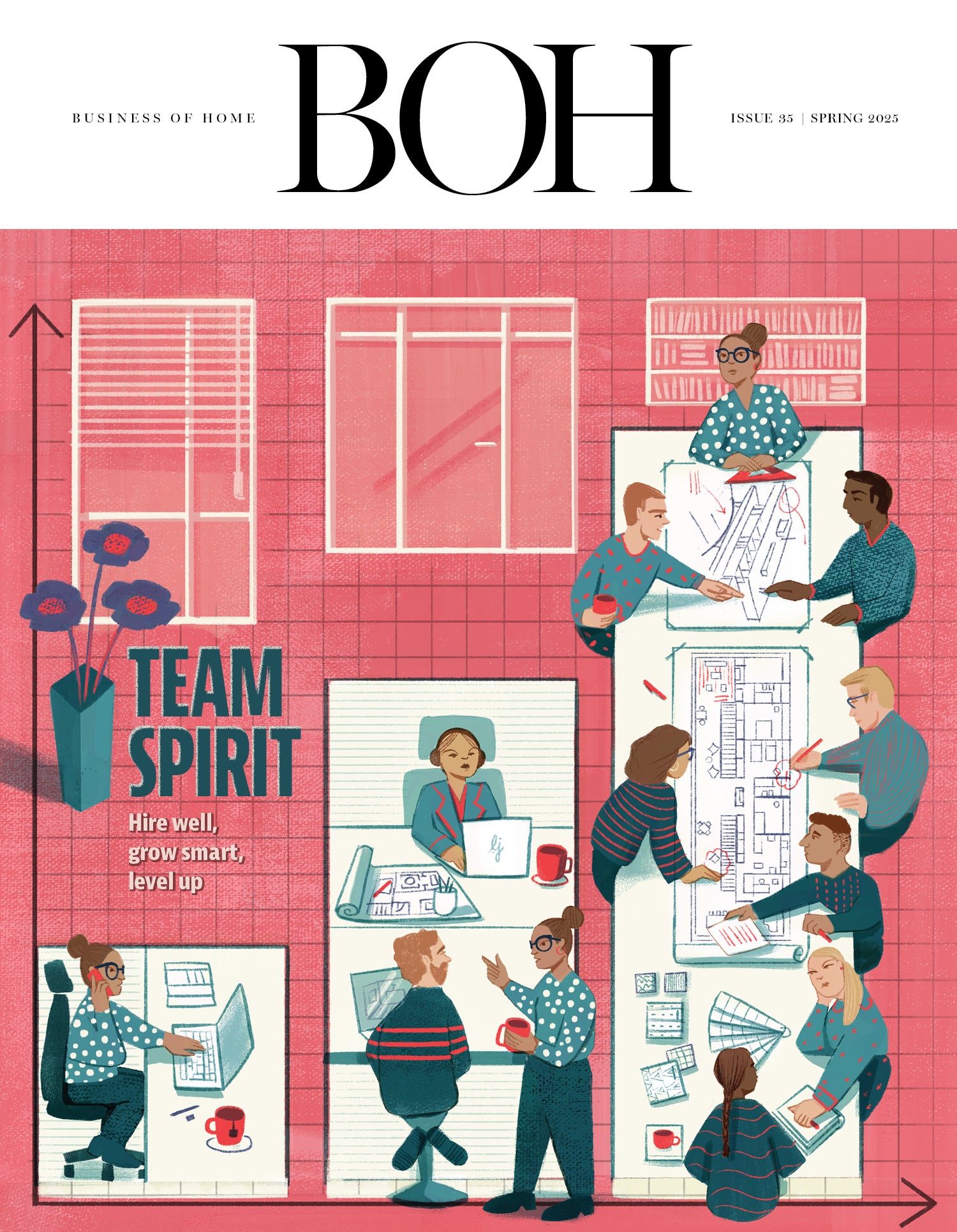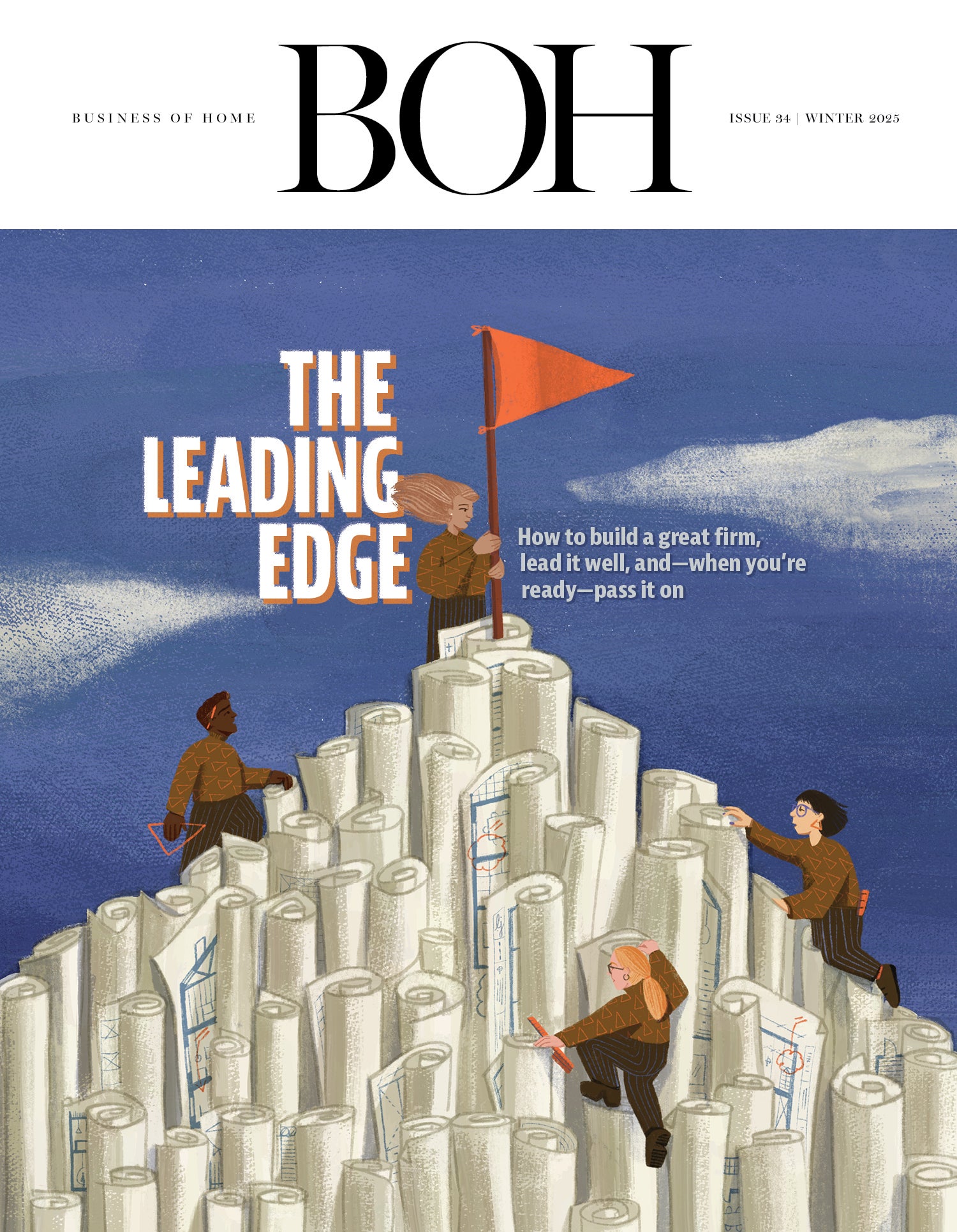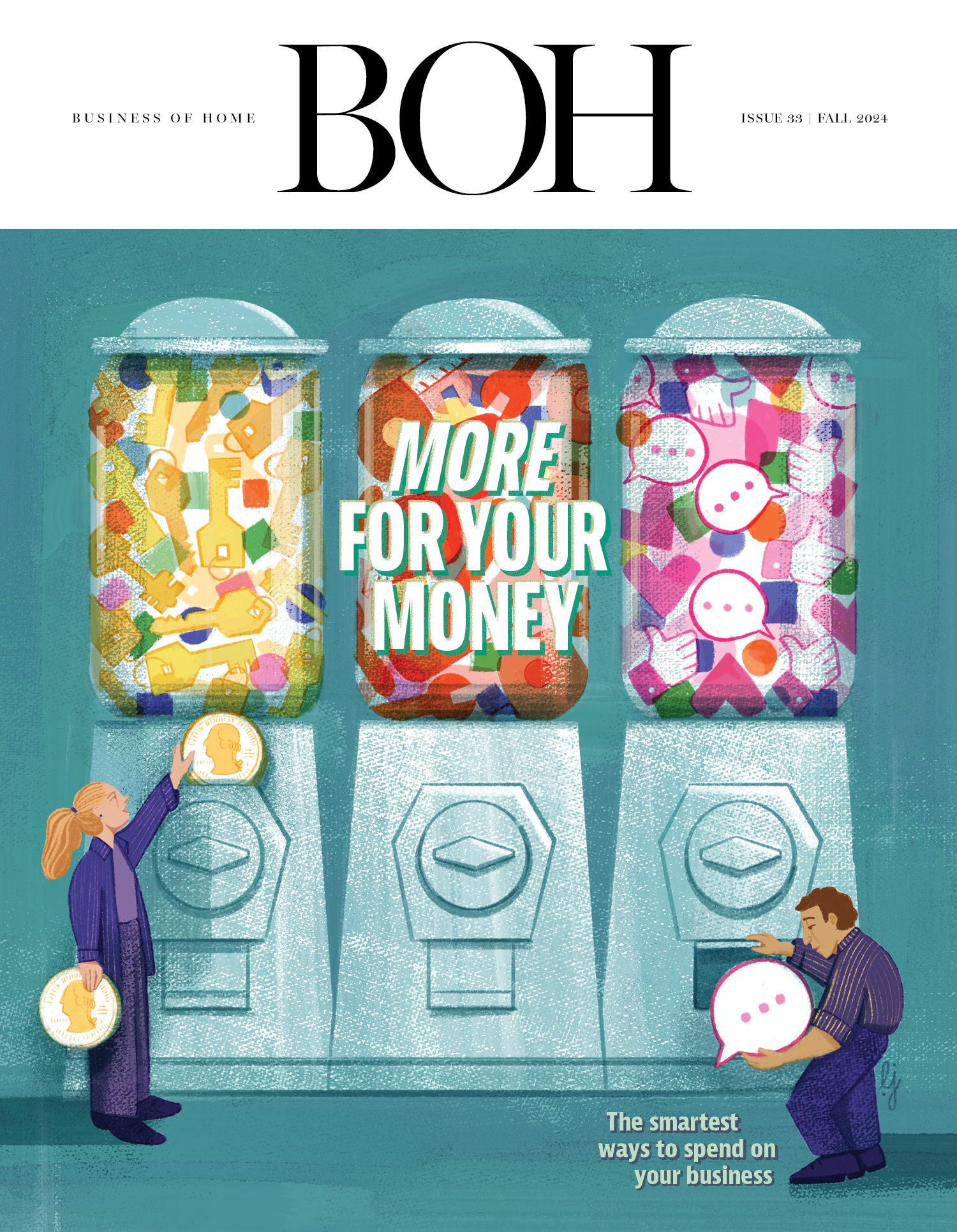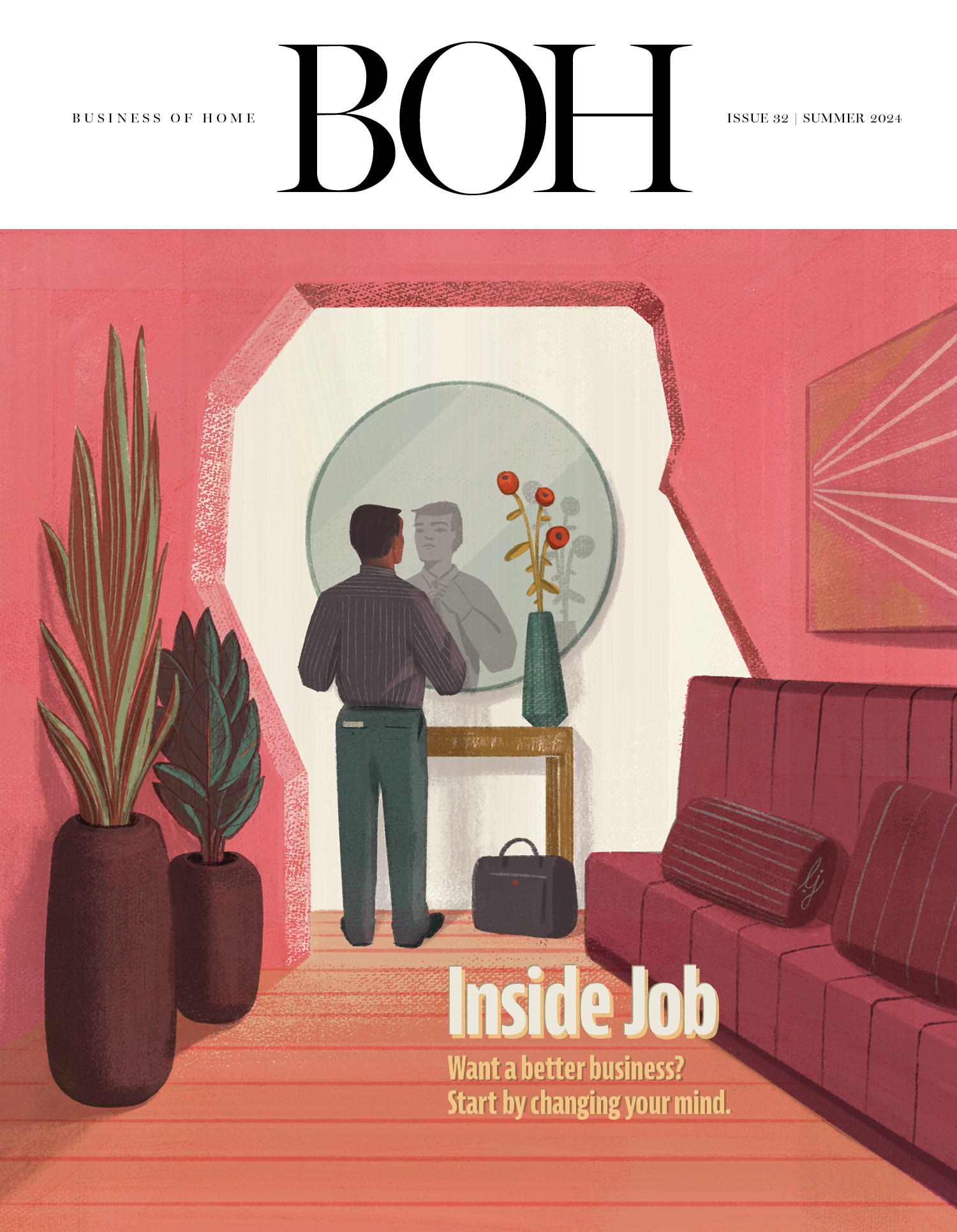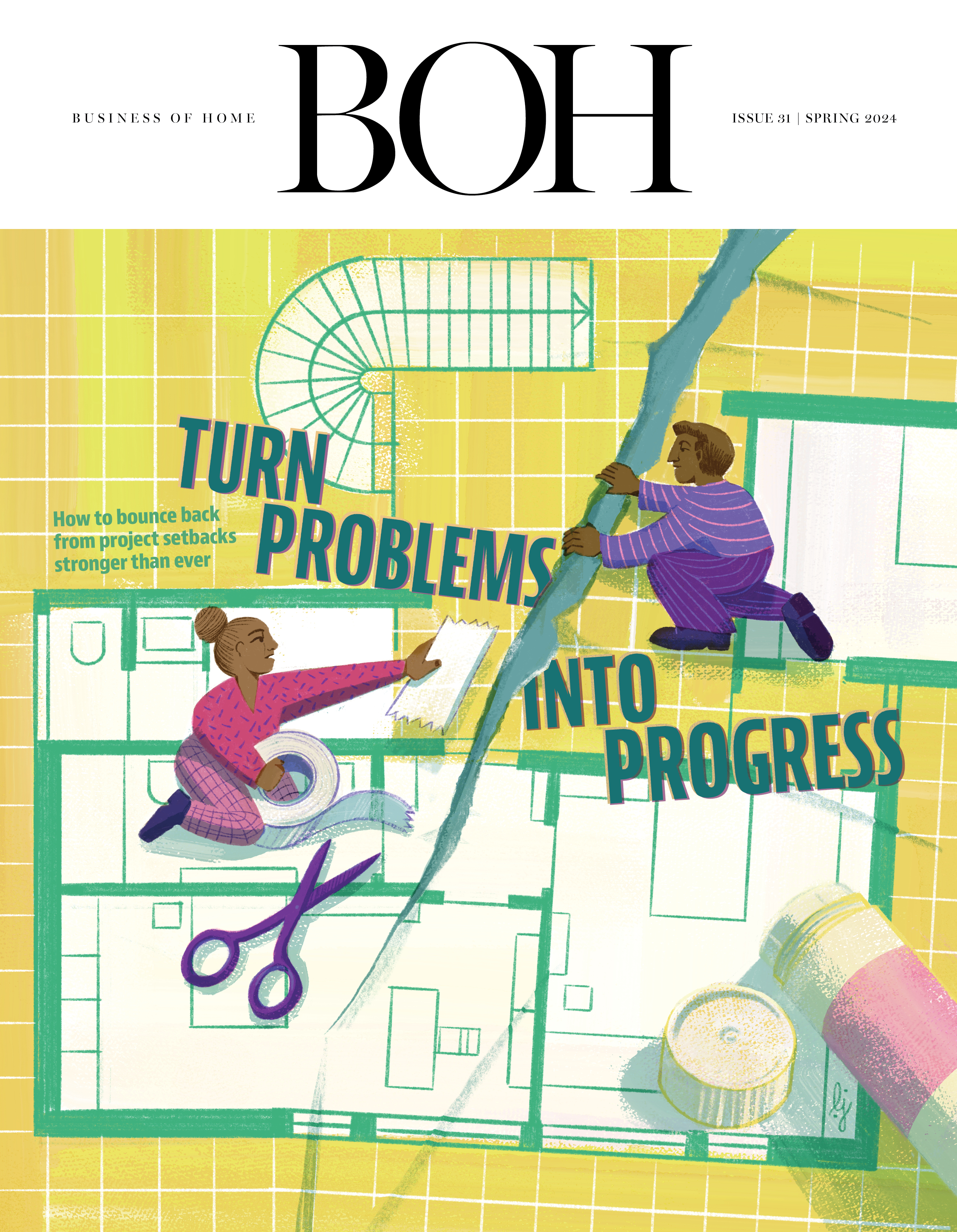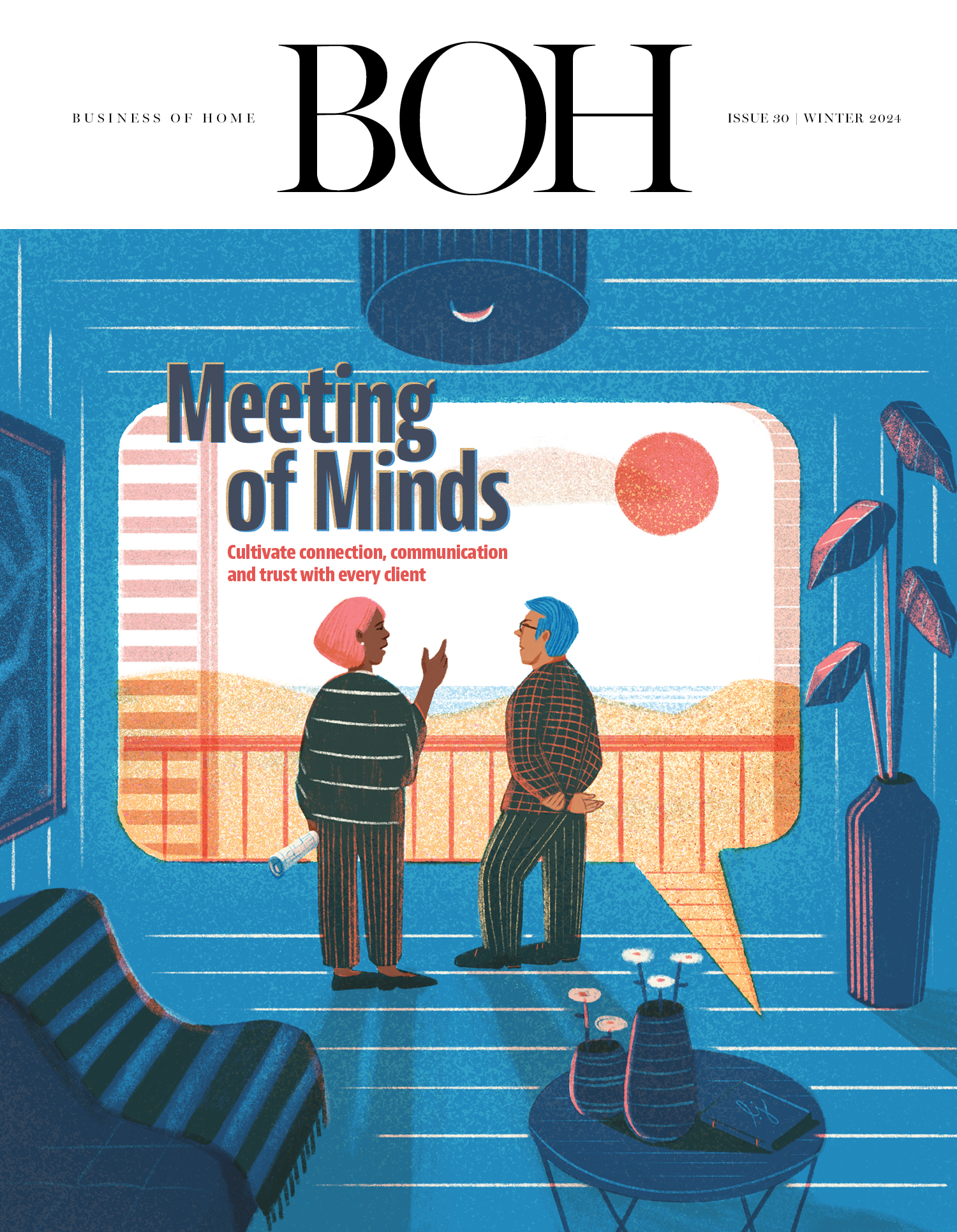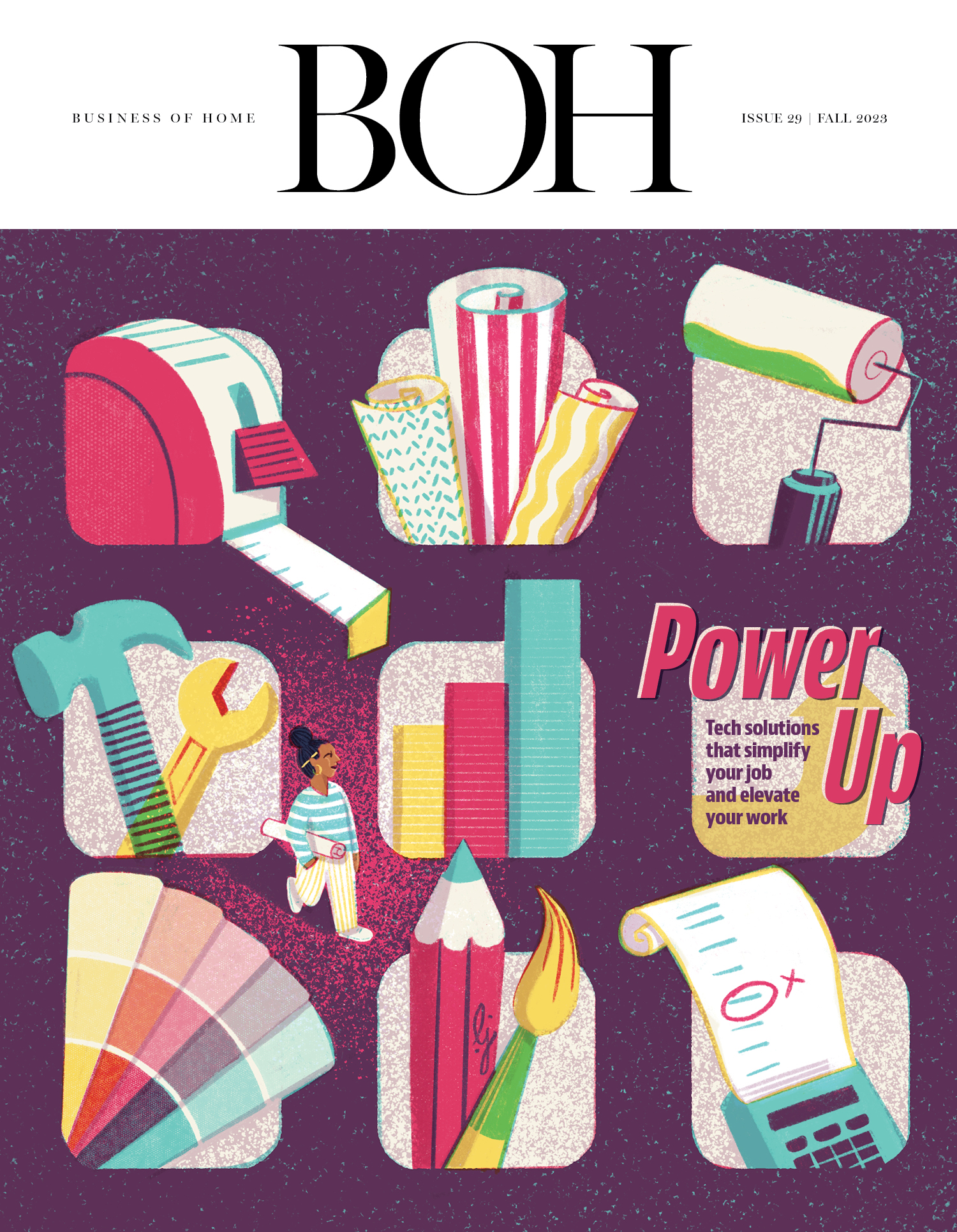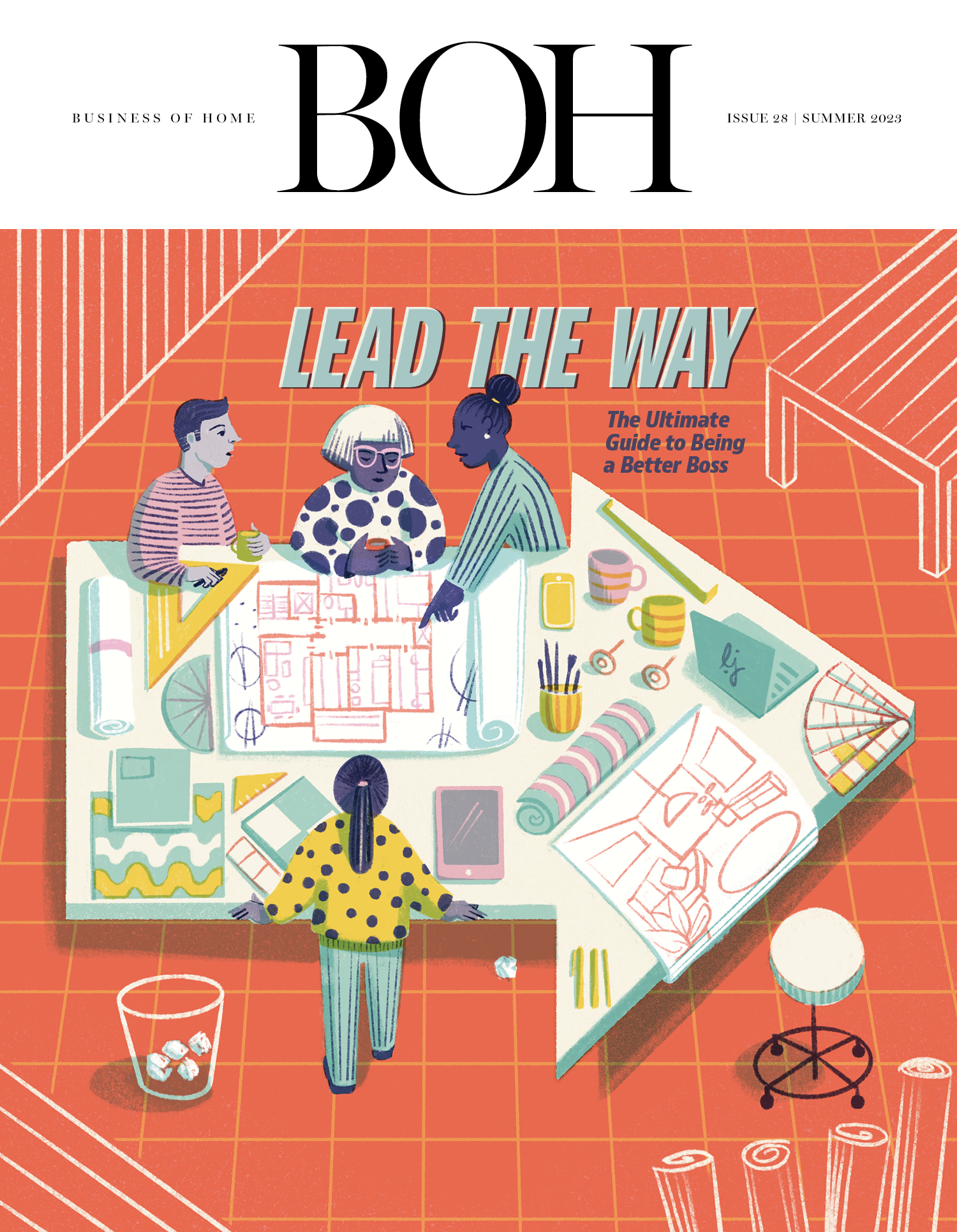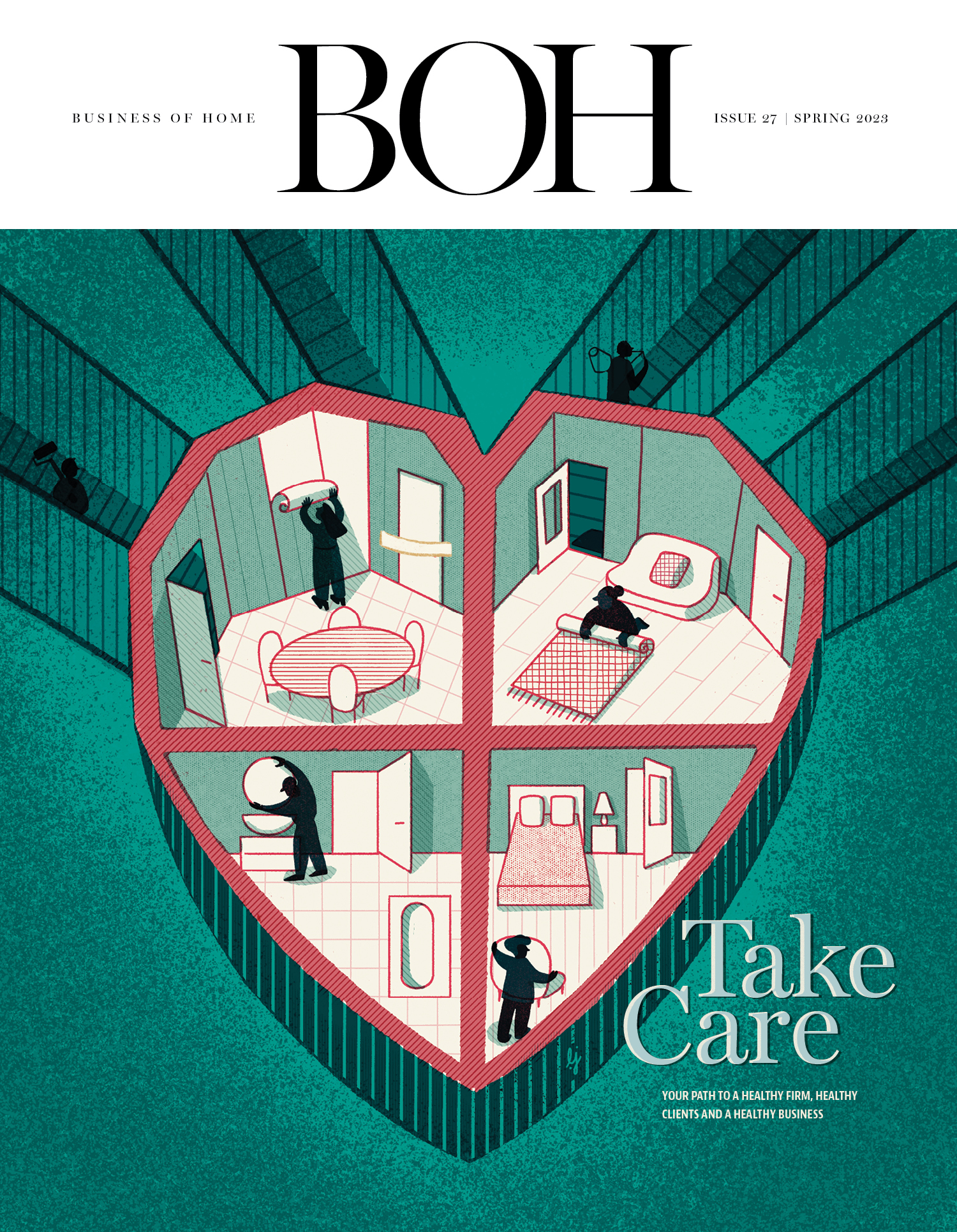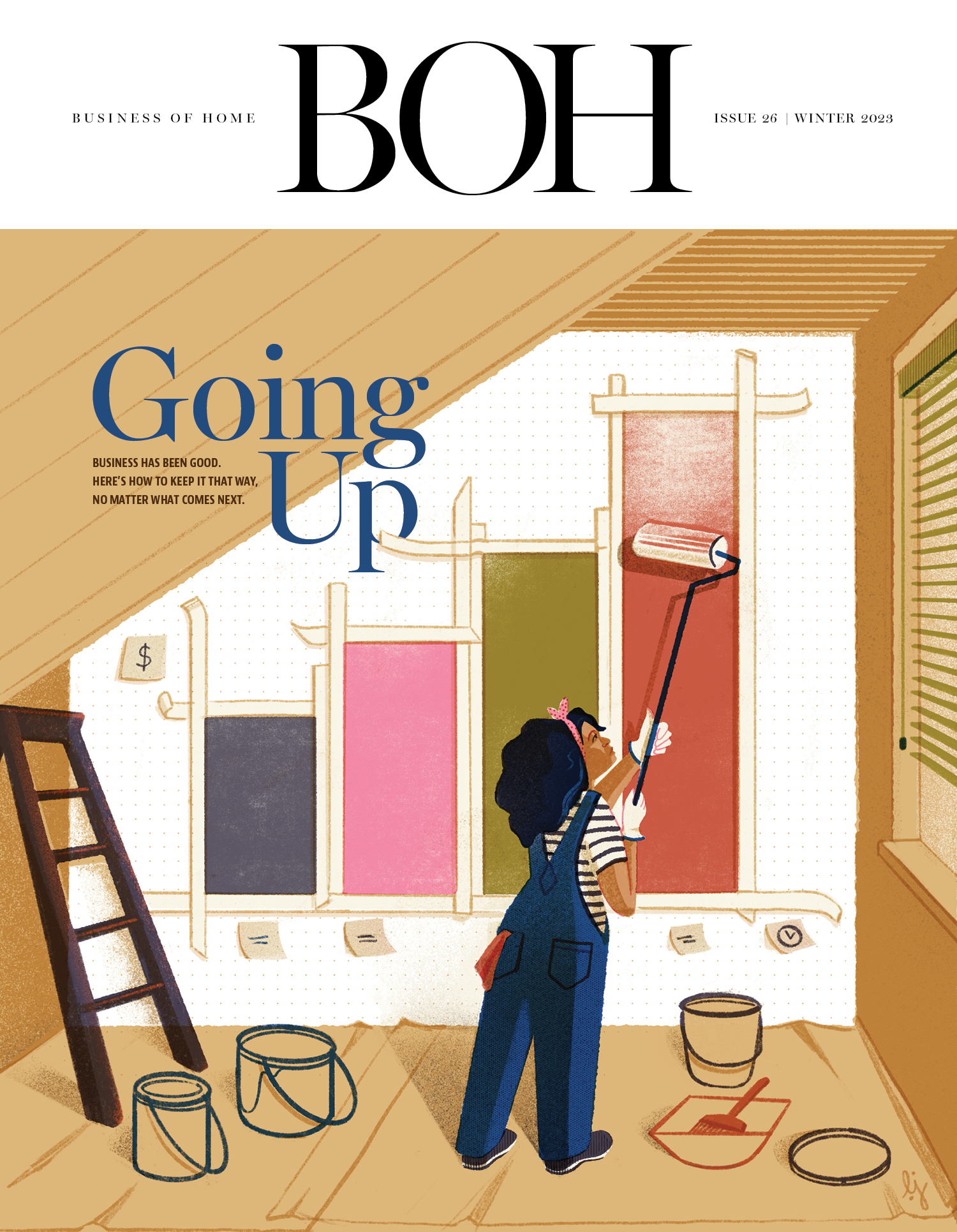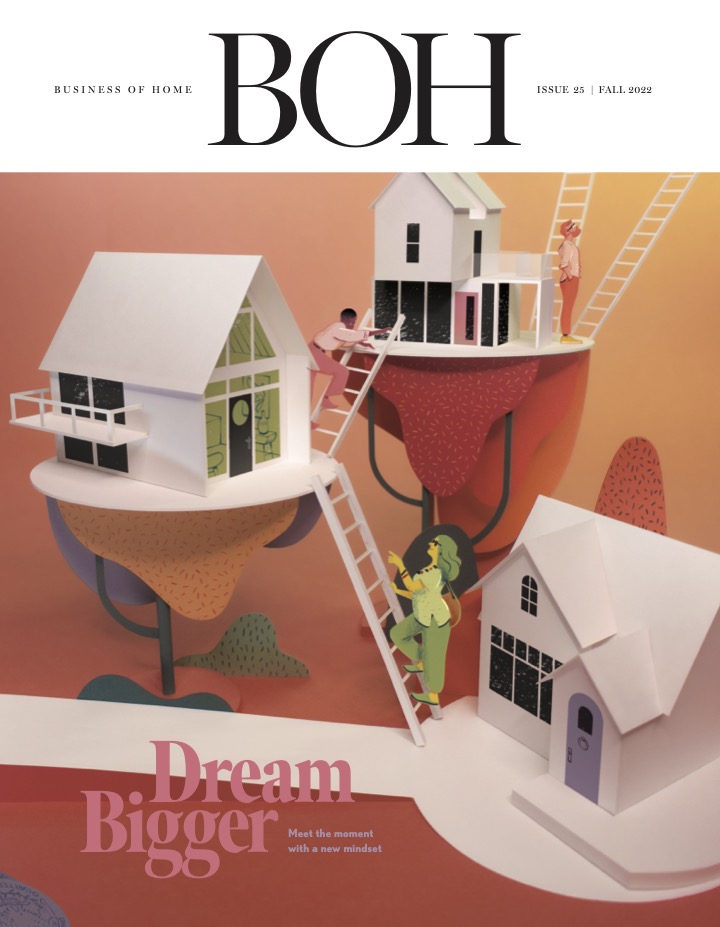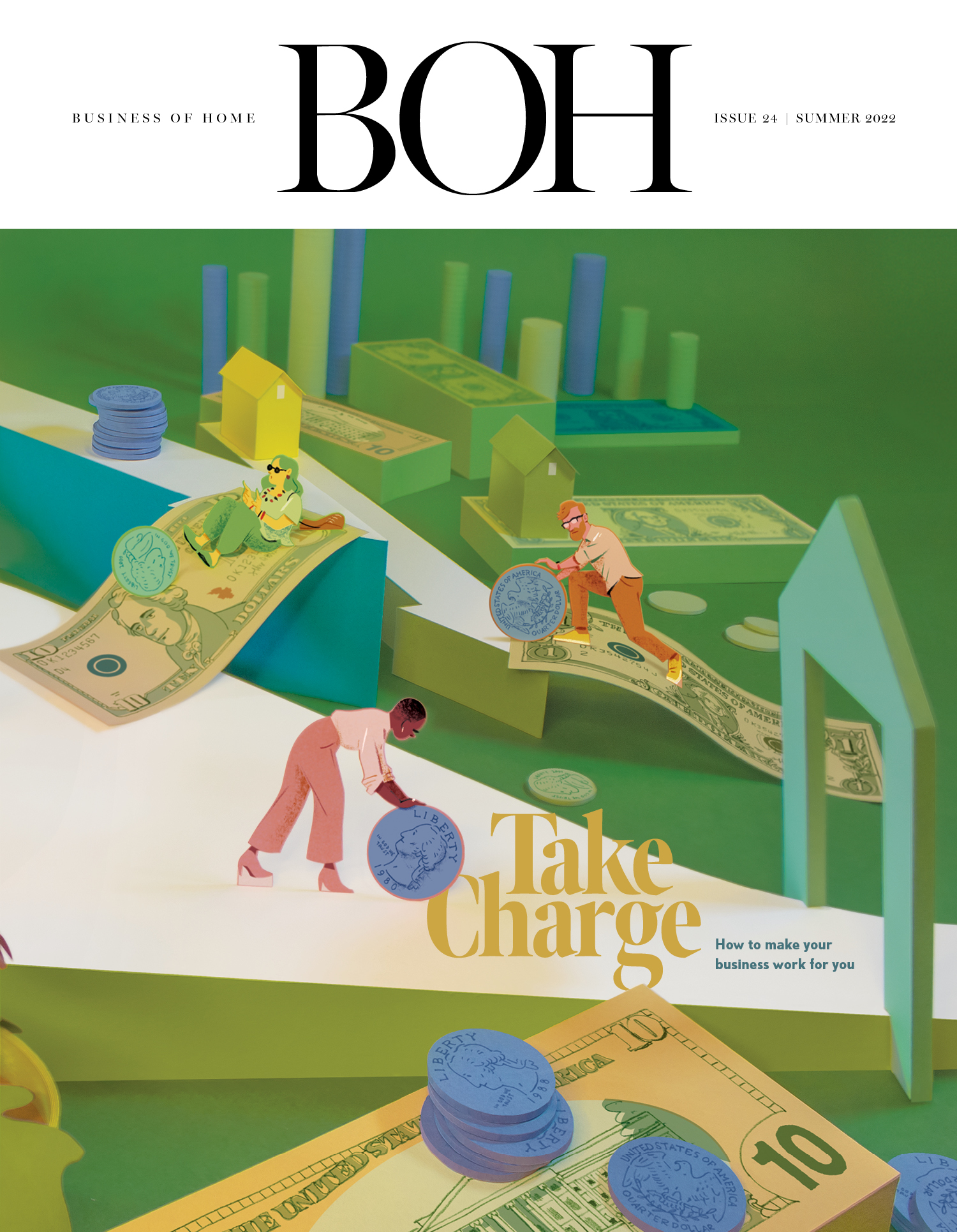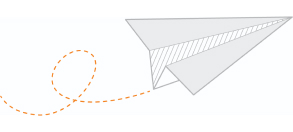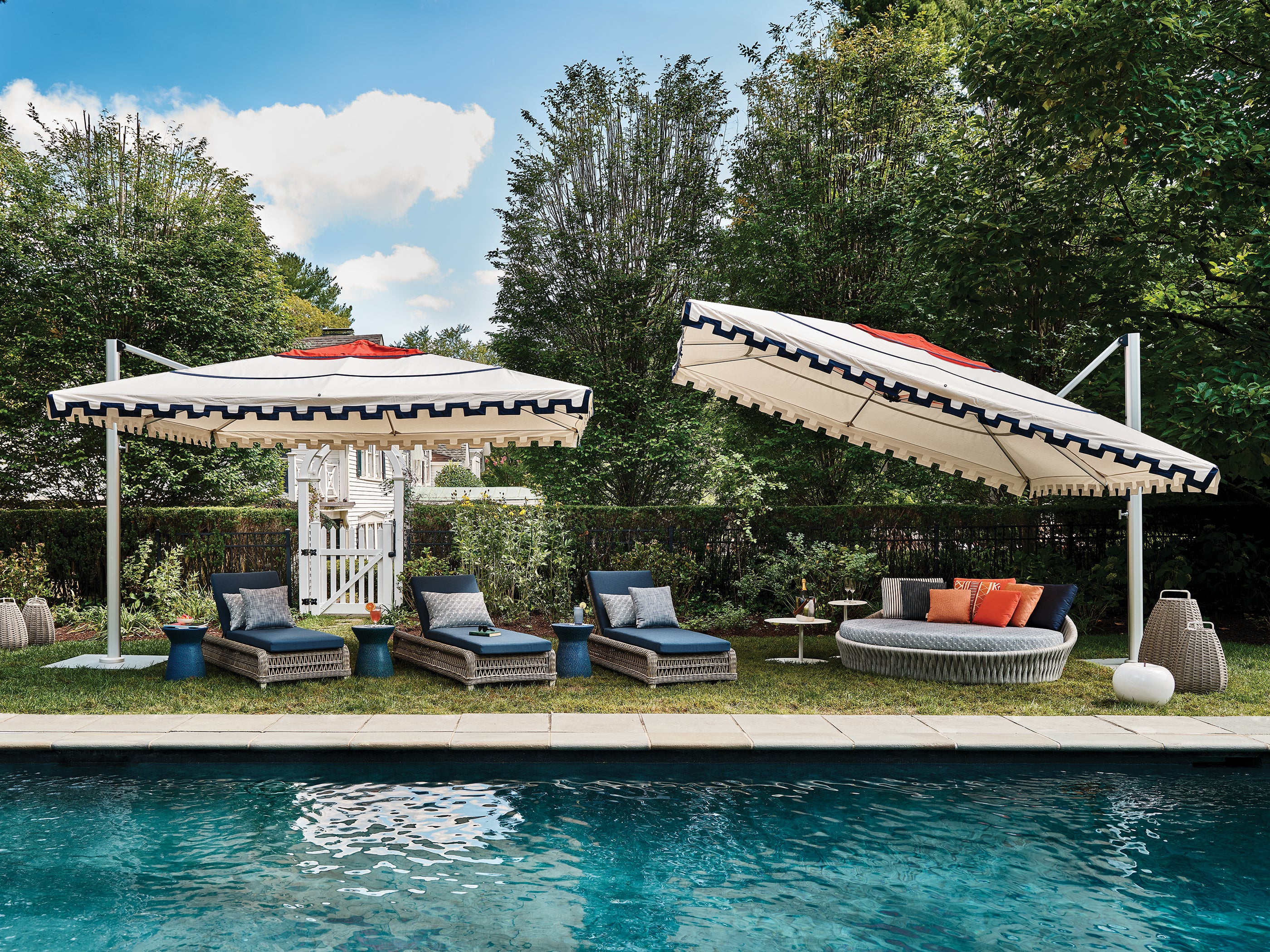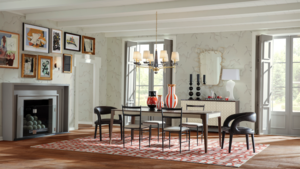For an outdoor empire with international reach, Janus et Cie has a remarkably humble origin story. In the late 1970s, founder Janice Feldman was an art school dropout, kicking around Europe in a VW Beetle painting portraits for tourists. She eventually made her way back to her native California and rented out a booth at the Rose Bowl Flea Market for $25 a month. That led to a showroom at the then-brand-new Pacific Design Center, specializing in “casual”—outdoor—furniture and textiles.
“When I started my company, the market for outdoor furnishings was very small,” Feldman told Business of Home in 2018. “I entered the industry at a turning point.”
It turned with a vengeance. Nearly half a century later, everything is different: The outdoor market has exploded, and Janus et Cie is one of the biggest players at the high end, with hundreds of employees and showrooms around the world. In 2016 the company was acquired by Haworth and integrated into a portfolio of brands that now includes Poltrona Frau, Cassina and Ralph Lauren Home.

In 2021, Feldman stepped back from the CEO role, and executive Greg Gainer took the job. Now there’s a new name at the top: Bill Ward. A veteran of the industry, Ward came up at ABC Carpet & Home in the 1990s—the Manhattan retailer’s glory days—working for Graham Head, Evan Cole and legendary owner Jerome Weinrib.
After leaving the company, Ward took on a variety of roles, including a stint at Stark, before a second run at ABC in the 2010s. More recently, he developed RH’s rug program from the ground up after the departure of Ben Soleimani—then went on to work on a little bit of everything for the Corte Madera, California–based giant, from furniture, lighting and decor to hospitality and digital strategy.
He joins Janus et Cie at an intriguing time. The housing market remains stagnant, but outdoor is one of the rare bright spots in an industry still looking for a way out of the post-Covid slump. The high end—Janus’s hunting ground—is more resilient than the lower tiers of the market, but competition is heating up. Business of Home spoke with Ward about his plans to focus on product, why outdoor remains a strong category, and how tariffs and a tough housing market will impact the brand’s plans.
On May 14, savvy strategist Ericka Saurit helps designers understand where Instagram fits into a holistic marketing program—and how to employ the platform to express what makes your business unique and use content to connect emotionally with your ideal clients. Click here to learn more and remember, workshops are free for BOH Insiders.
Before you joined RH, you had an interesting career detour with a technology company in 2019. Tell me about it.
ABC was going through a transition between Mr. Weinrib’s generation and his daughter, and I had a vision for ABC, and she had a different vision. It was clear that I didn’t have a place there anymore, and so I left. So I went on kind of a walkabout—I was really committed to ABC for a long time, and I needed to clear my head.
Concurrently, a very close friend of mine had this technology logistics business, and I was on his board. This could not be further away from [my experience]—this is building cell towers for T-Mobile and Sprint. I joined that company as an interim president, just on a one-year basis to help him through something that was going on with his business. I had been an advisor for a long time, so I was able to drop in without the usual on-ramp.
During that period, I was put in touch with Gary Friedman, and we developed a pen-pal type of back-and-forth. Gary is a phenomenal merchant genius, and probably will go down as such, forever. I hadn’t really had a dream of going to work for RH—I’m a New Yorker, and I didn’t necessarily want to jump over to Marin County. But it was clear that he was interested in hiring me, and as I learned more about RH, I was like, Maybe this could be interesting. I joined right at the beginning of Covid, and I left midway through 2023.
What were you working on while you were there?
I entered RH with the mandate to help them turn around their rug business. It’s an area of expertise I’m passionate about, and I felt I had a strong vision about how they might do it. So I started in that area, and I was very fortunate—it worked. We developed what I would regard as probably the best in the industry.
When you work with Gary and the leadership [there], if you have something to contribute, you get into the mix of the business as a whole. You kind of go where Gary goes. I had my own direct portfolio of responsibilities, but it was like: “Well, we’re going to talk about furniture today,” or “We’re going to talk about restaurants today,” or “We’re going to talk about real estate.” It was easily one of the most fulfilling and exciting career periods in my life. It’s a super intense place, and it’s not for everybody, but I learned a lot and had a ton of fun.
As time went on, RH started giving me more categories, more product areas to oversee. So [my job] ended up being textiles and decor and lighting. Ironically, it’s a pretty small [internal leadership] group—that lean model is interesting. You can go a lot faster with the right leadership and the right vision and the right priorities.
Are you more of a product person or a systems person—what’s your superpower?
You can’t overstate the importance of a well-structured, well-designed system. I love picking apart how to make a company work better, drive better results, but it’s always through the lens of beautiful, well-crafted and—if possible—handmade products. So I would say my superpower would be fusing creative sensitivity with commercial acumen.
I guess it’s a bit of an artificial distinction. At a certain level, you have to care about both.
I like developing collections, but I also appreciate that if I want my design vision to come true, I also need to take responsibility for getting it sold. I don’t want to write a song that nobody hears.
Tell me about the appeal of Janus et Cie. What made it a good fit?
If you look at the history of the company, it’s definitively a market leader. It’s certainly one of the bigger companies in the space, and it has a strong, foundational heritage that could use a reassertion—
Some zhuzhing.
Yeah, some zhuzhing. Janice Feldman built something that I think is truly incredible. I was looking at the business where it was, and clearly the outdoor sector has just ballooned. The number of players in it—it’s become much more fragmented and diverse. Many companies that were exclusively in the indoor sector are now venturing into the outdoor sector, and they’re finding their own piece of the pie. And if you go back 40 years to when Janus was a pioneer of the sector—it’s just a different world now. Look at RH’s outdoor business. They’re, by historical standards, new entrants in the sector, and they’re obviously doing very well.
But the pillars of the Janus brand are: strong brand equity, a strong foundational assortment, beautiful product and a great platform—lots of showrooms and a lot of high-quality people. So I thought, OK, this is an interesting collection of challenges and opportunities. The outdoor sector is growing, Janus can grow along with the market but also reclaim its leadership position.
Why has outdoor been such a growth category recently?
I think that the consumer is just getting a lot more attuned to the notion of designing their outside space. And the absolute proliferation of higher-quality design to the public has made that possible. It used to be that retail, inexpensive outdoor furniture was ugly, and trade-level outdoor furniture was beautiful. Retail was cheap, and trade was expensive. Now that gap between mass, premium and luxury has gotten a lot smaller.
Ten or 15 years ago, aside from companies like Janus, the outdoor business was largely a sleeper category. But now there are a lot of real serious players in the business. And honestly, there’s a lot of beautiful product out there. Is it all well made? Definitely not. Are there good service guarantees behind it? Definitely not. But that’s fair competition. … It’s putting pressure on the trade business and companies like Janus to be even better. I think we’re rising to the occasion, and we’ll continue to do so. But it’s not going to be easy. If it wasn’t hard work, everybody would do it.
People talk about Covid spurring the rise of outdoor. What do you think?
I think Covid was throwing a little fuel on the fire that was already there. I think there was a two-year period where people were genuinely looking at the outdoor space, saying, “We’re spending more time outside socializing because it’s safer, so let’s make it nicer.”
The Covid home boom is over for so many categories. But it seems like outdoor still has strength. Why?
There’s just [less] saturation in the outdoor sector. If you went around to 10 of your friends and looked at their outdoor furniture, I’m going to guess that a lot of them still either don’t have furniture or they have furniture they would love to replace. It’s just like I’ve never met a person that didn’t need a nice rug. There’s always a space in the house that needs a rug. It’s one of those sectors where there’s just so much upside still.
You mentioned earlier about “reasserting” Janus et Cie’s brand. What does that look like?
I think [we need] a new round of design, a new round of product. Things we develop internally, but also looking for new designer relationships, maybe with a slant to American designers, or, let’s say, non-European designers—there are a lot of interesting design ideas out of South America. Most of our business is in America, but what we’re finding in the European market is that our clients there are also wanting what I would say is an American perspective.
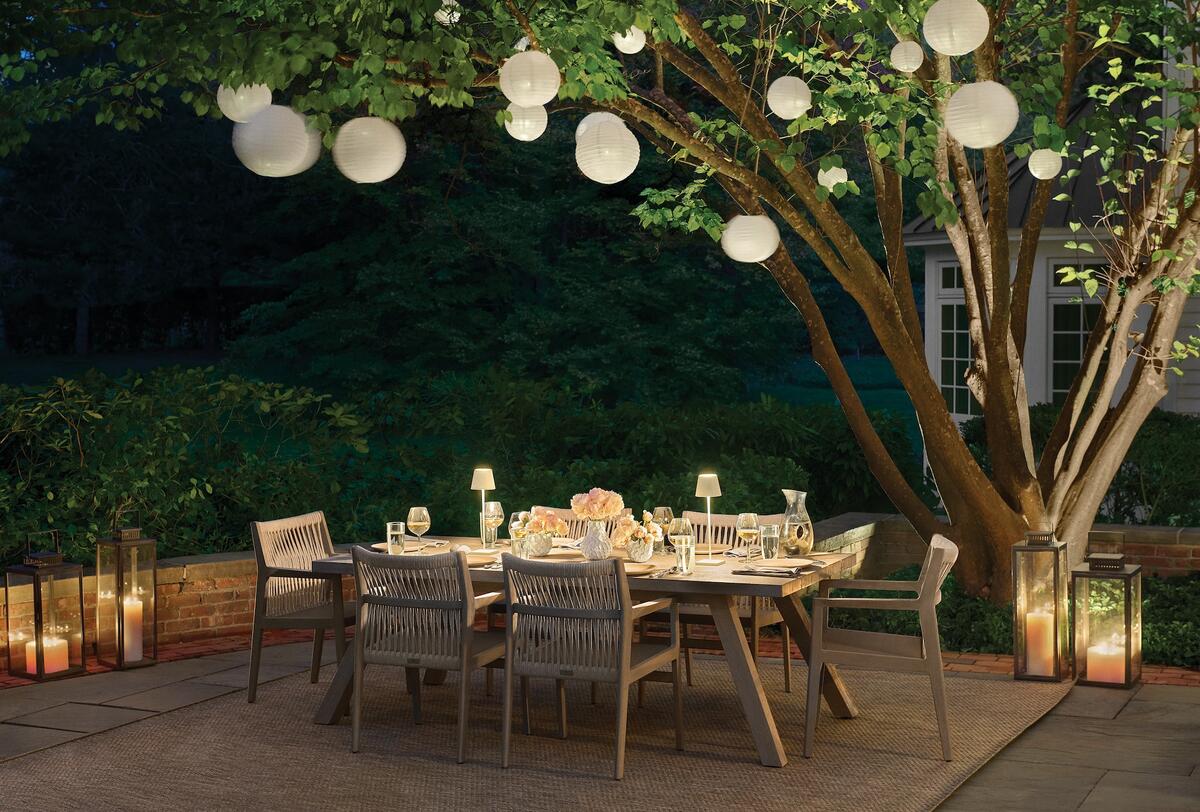
How do you choose the designers you want to collaborate with?
I’m looking for a designer—a collaborator, a partner—that will see the whole chessboard. They’ll see the whole market, and say, “This is a new take on bohemian desert chic, because this is why I think there’s an opportunity in that design lane …” rather than saying, “Here’s a new silhouette.” It’s somebody that hopefully has a design practice of their own, their own clients, their own relationships—that certainly would help amplify and validate the work.
Somebody who has a profile?
It certainly wouldn’t hurt. But celebrity only gets you so far. … The media loves to talk about this person and that person, but if you really look at the numbers, some of the most successful designers of product are the people that aren’t necessarily being spoken about. It’s a difficult needle to thread.
Let’s talk about the trade. What’s your approach to working with designers?
Trade is super important to us. We acknowledge and value what the trade community brings to us today, and the potential. We treasure and value the relationships, and we would seek to expand those relationships, because at least in America, it's how people buy at the high end.
The Janus vision is design, it’s quality, it’s the thoroughness of the offering. We’re doing things in our products and in our business that, honestly, only the most elevated crowd is going to understand. We’ll get retail customers walking into our showrooms once in a while, and a lot of times they don’t see it, or they don’t get it. That’s fine.
Is trade 80 percent of your business? 95?
It’s a very high percentage. Overwhelmingly so. To be fair, in Europe and other markets, the tendency is that the end consumer is more likely the purchaser, because they don’t always have a designer.
That’s another reason why European companies struggle in the U.S.—they don’t want to give up the margin.
Well, no, I don't agree with that. Everybody wants to make money and do well, but the notion of an end consumer hiring a person to design their home in Italy or in France is just far less common. When these European companies come over here, they’re taking a very retail approach to their business because it’s what they know. But if I were to project out over the next 10 or 20 years, I think you’ll see a much sharper focus on account-based trade relationships from all of the European brands.
I was thinking of Daniel Lalonde, the former CEO of Flos B&B Italia Group, who would sometimes say that ideally his companies would never discount any of their product, no matter who the buyer was.
Everybody has their own approach. But listen, you can chase the pennies, or you can chase dollars. And the fact is, the vast majority of people who have homes in the millions or tens of millions of dollars, they’re going to hire a professional designer because that’s how you get the best result. To deny the importance of that community when you’re trying to sell a $20,000 or $30,000 or $40,000 sofa is probably self-defeating.
What are the challenges and opportunities when it comes to the trade? What can Janus be doing better?
I think if you are creating beautiful product, and you are known to have great service, they’re going to find you. This is a community of people who are specifically interested in finding you. It’s not like I’ve got to go hawk our wares to an unknowing, undefinable audience of people. We know who the designers are. You can look at databases and read magazines and figure out who’s doing what. So Janus has a great following today, but I think the opportunity for us to reach a broader spectrum of high-end designers is through product.
There are all kinds of social media marketing plans, and it’s such a rapidly changing landscape where you have the declining value of SEO and these kinds of platforms where designers are going. They’re reading Business of Home or they’re finding leads and insights in ways that 10 years ago would be markedly different. You’re seeing a rise again in some traditional print media, and things like Frederic. But it’s all marching to the drumbeat of a crowd of people who want to find cool, new, beautiful things. So if you want those people, you have to have the cool thing.
It’s about product.
You can rebrand or have an Instagram campaign and all that kind of stuff, but if it’s not rooted in beautiful design, excellent quality, superior service, you’re just going to end up in a cul-de-sac, commercially. So you’ve got to start there. It’s product, product, product.
What I’m thinking about at the end of the day is: What’s the next big idea? What’s the next big product? What’s the next big design theme that we can lean into to say, “Janus has got some momentum”? That’s what I’m really focused on.
We’re at a strange moment with the housing market being slow and all these incoming tariffs. Can you talk about what all of that means for Janus?
The randomness of the current economic climate and the tariff environment is certainly a concern. Fortunately, it’s affecting most people kind of equally. We’re not dependent on China or Mexico, but still, it’s going to put pressure on the economy in general and this industry in ways that are hard to predict.
You’d be a fool to say you weren’t taking a really hard look at: How nimble can my supplier base be? You’ve got to be able to react and listen. If we were a company with like two showrooms and a handful of staff, that’s one thing. But when you have such a network of showrooms as Janus does, we have a lot of clients. We’ve got a pretty good pipeline of business happening. So making changes—you have to be very careful. But [we’re looking] at new countries, new suppliers, new designs, new everything. You have to have your ear to the ground.
The housing market is still very sluggish, and it doesn’t seem like there’s an immediate sign that it’s going to be turning around quickly. How does that factor into calculations about what you want to do in the next year or so?
There are two ways to grow the business. You grow along with the rest of the economy, or you take market share. So where the industry as a whole might be struggling to grow—there’s also weaknesses in the competition that we can go after and take advantage of. Janus does a handful of things, I would say, much better than everybody else.
What kinds of things?
Customization. We have a heavy emphasis on custom cushions. We have a wide range of finishes. Leaning into that is a strength. Working with Janus, people don’t feel like they’re without options or versatility. There’s a very narrow color discipline that a lot of outdoor brands focus on—obviously a big audience likes beige and gray, but there’s also a lot of people that don’t. So it’s leveraging the strengths of the brand.
If I’m reading you correctly, it’s: Yes, overall business conditions are not good, and we don’t expect to grow through the roof during this period, but there are pivots to be made.
There are moves we can make. I’m looking to put a strong emphasis on fabrics and textiles, because they often lead the whole process. By doing a much broader reinvention of our approach to fabrics and textiles, I think would be very well received. If you look around at the fabric houses, the pace and the quantity of innovation, either through the curators or the mills—it’s just volcanic. There’s so much cool stuff being done.
You can’t look at this business through only one lens. That’s where the strength of the platform that we already have comes in. We are looking to open up showrooms in the next 18 months—we’re optimistic. But it’s not like it’s going to be easy.



